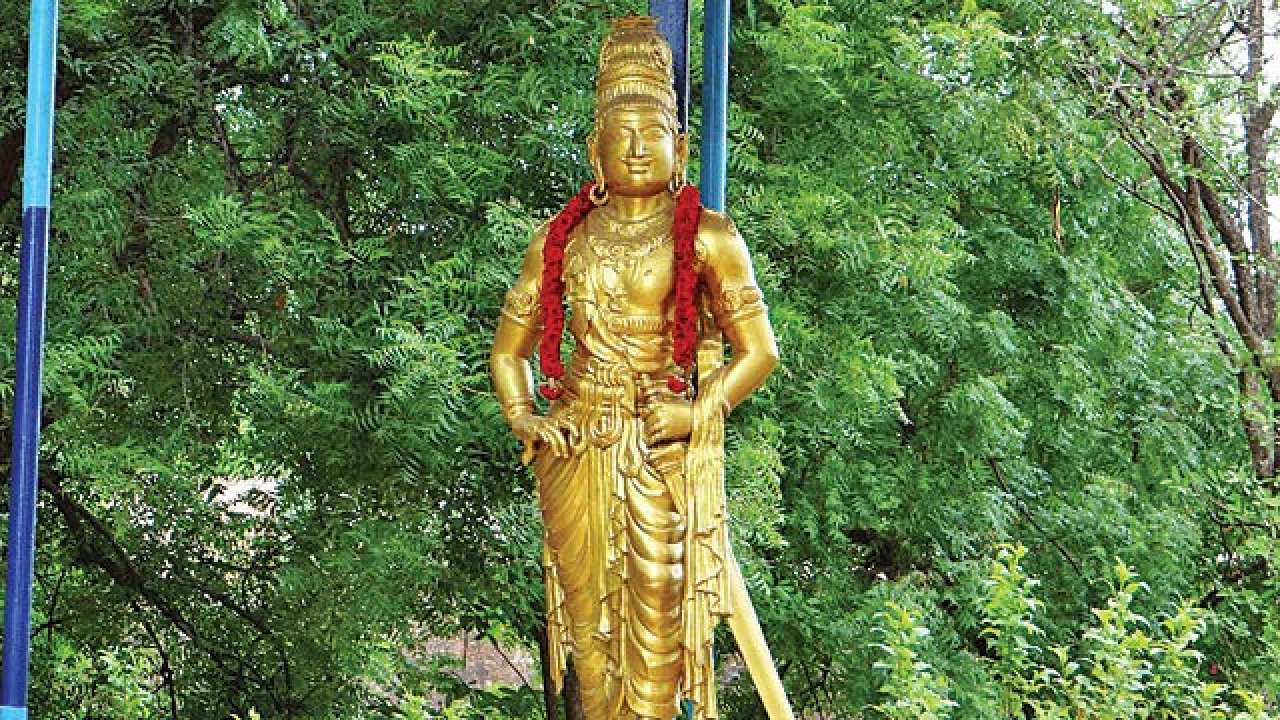
The history, legends, and myths of Sri Lanka are replete with stories of Indian princes or adventurers capturing power and establishing dynasties. The proximity of the island and its resources undoubtedly attracted attention from many Indian and foreign powers. The Sinhalese kingdoms had also imported thousands of mercenaries from southern India to fight their internal wars and these mercenary communities soon gained significant power. Such contacts, trade, invasions, and migrations also caused intermingling of blood across the various strata of Sinhalese society down the ages. In this eventful history, the Chola conquest of 1017 CE (in the same year Ghaznavi invaded India for the catastrophic ninth time) stands out due to the scale of the campaign and its impact on Sinhalese history.
The Chola-Pandya rivalry was a feud that lasted many centuries. The incessant wars dragged in other powers such as the Cheras, Chalukyas, and the Sinhala kingdom. Perhaps the disruption of trade caused the Sinhalese intervention, perhaps it was the strategic need to prevent the Cholas achieve total supremacy. The Sinhalese allied with the Pandyas, but in 920 CE, the alliance was decisively defeated by Parantaka Chola I. The Pandyan and Sinhala kings fled to Lanka. History and legend blur at this point. Cholas reduced the remaining Pandyas to a vassal state; however, the Cholas were unable to capture the Pandyan crown jewels, which included a necklace that a mythical Pandya king apparently won from Indra himself. The fugitive Pandya king placed these treasures under the care of his Sinhala ally, thus cheating Parantaka Chola of a “real victory”. The Cholas gave chase but had to retreat to the mainland as supply lines were strained.
Rajaraja Chola I got his chance when a mercenary rebellion made the Sinhala king flee the capital in 993 AD. The Chola had pacified his other foes at this point and he quickly seized the opportunity. The subsequent Chola invasion peaked with the razing of Anuradhapura, capital of Lanka for fourteen centuries, and planting a Chola viceroy in a new capital. The Cholas, however, failed to extinguish the ruling dynasty and could annex only northern Lanka. This was due to fierce resistance, the terrain and the rise of the Western Chalukya Empire in the Deccan. The invasion was halted without meeting the twin objectives of total conquest of Lanka and possessing the Pandyan crown jewels. Rajaraja Chola’s son Rajendra Chola’s initial campaigns in the mainland were successful, but the unfinished business of Lanka still rankled. Partly at Rajendra Chola’s encouragement, the Parmara kingdom of Central India kept the Chalukyas embroiled in the Deccan. This freed the Chola armies for redeployment to Lanka in 1017. As per Lankan sources, the Chola invasion was swift and unrelenting. Whole armies were swept away, and cities and religious centres plundered and razed. The entire island was conquered shortly. The Cholas also captured the coveted Pandyan crown jewels and most of the Sinhalese royalty; the Sinhala king would later die in captivity. After their swift victory, the Cholas attempted to recast Sinhalese polity and society by establishing new cities, trading posts and issuing new coinage. They also planted temples and garrisons across the island and executed major public works.
The spirited assimilation attempt failed in a few decades. The Sinhala royal bloodline had survived in the form of some determined scions. The Lankan resistance regrouped and challenged Chola control at every opportunity. In 1077, the Sinhalese under Vijayabahu I defeated the Cholas, who retreated to the subcontinent in good order — perhaps realising that the continuing Chalukyan ascent was a greater threat. Flush with victory and fame, and wed to princesses of Kanauj and Kalinga, Vijayabahu planned to invade the Chola lands. However, his Indian-origin mercenaries rebelled, refusing to fight their kinsmen this time. The rebellion was suppressed with much effort and the Sinhalese did not foray overseas again.
The author, an IIM-Ahmedabad graduate working in the energy sector, has a keen interest in history, politics and strategic affairs